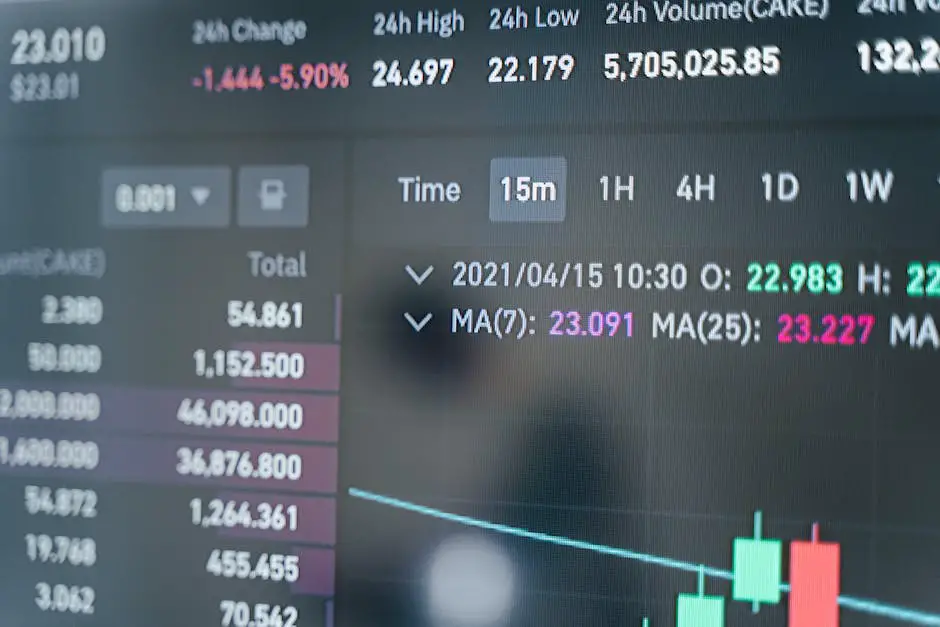Mastering Currency Speculation: Strategies & Tips
In today’s global economy, currency speculation has emerged as an essential and captivating component for investors, financial institutions, and individuals to potentially generate significant returns. This vast market offers unique opportunities and challenges that demand a comprehensive understanding of its intricacies. To navigate the often-turbulent waters of currency trading, it is crucial to cultivate an in-depth knowledge of various aspects, ranging from the foundational concept of currency speculation to the strategies and tools employed by successful speculators.
Understanding Currency Speculation
Currency speculation and its Significance
Currency speculation is a financial activity that involves buying, selling, and holding various currencies to make a profit from their fluctuations in value. It is a complex and dynamic process that plays a significant role in the global financial markets, with both potential risks and rewards for investors. This article will explore the concept of currency speculation, its significance in the global economy, and the factors that drive currency values.
Significance of Currency Speculation
Currency speculation is a crucial aspect of the foreign exchange market (Forex), which is the largest and most liquid financial market in the world. Since currencies serve as essential means of exchanging goods and services globally, the Forex market helps facilitate international trade and maintains a smooth operation of the global economy.
Speculators play a vital role in providing liquidity to the market, as they are continuously involved in buying and selling of currencies. Without currency speculators, the market would lack sufficient liquidity, leading to excessive price movements and making it challenging for businesses and individuals to exchange currencies at stable rates.
Moreover, currency speculation contributes to the discovery of exchange rates, which are constantly changing due to various economic, political, and social factors. Speculators aim to predict these fluctuations and capitalize on them, contributing to efficient pricing in the Forex market.
Potential Risks and Rewards
Currency speculation carries inherent risks, as currency values are subject to unpredictable changes, driven by various factors. Some of the primary risks associated with currency speculation include leverage, volatile market conditions, and lack of diversification.
Leverage in Forex trading allows investors to control large positions with a relatively small amount of capital. While this can lead to significant profits if speculators predict the market correctly, it can also result in substantial losses if the market moves against their predictions.
The Forex market is known for its high volatility due to continuous price fluctuations. Currency speculators need to be aware of the potential for rapid and unexpected price movements, which could lead to sizable losses.
Lack of diversification is another risk associated with currency speculation. Concentrating investments in one or only a few currencies can expose speculators to sudden adverse market movements, leading to significant losses.
However, currency speculation can yield considerable returns for those who successfully predict currency movements. By leveraging their investments and capitalizing on the market’s volatility, speculators can achieve large profits in relatively short periods.
Factors Driving Currency Values
- Economic indicators: The strength of a country’s economy plays a crucial role in determining the value of its currency. Factors such as GDP growth, inflation, and interest rates can affect the demand for and supply of a currency, influencing its exchange rate.
- Political events: Political stability and government policies impact a country’s economy and, subsequently, its currency value. Elections, political unrest, and changes in government policies can create uncertainty and affect exchange rates.
- Market sentiment: Market participants’ perceptions and expectations about economic conditions, interest rates, and political stability can alter the demand for and supply of a currency. Sentiment-driven trends can result in substantial exchange rate shifts, providing opportunities for currency speculators.
- Central bank actions: Central banks play a critical role in managing exchange rates by implementing monetary policy and managing currency reserves. Actions like setting interest rates, intervening in the Forex market, and quantitative easing can significantly affect a currency’s value.
Introduction to Currency Speculation
Currency speculation is a financial activity in which individuals, institutions, or organizations attempt to profit from the fluctuations in foreign exchange rates by buying and selling various currencies. This involves predicting the future direction of exchange rates and executing trades based on these predictions. There are several major players who contribute to the overall market environment and utilize different trading platforms to execute their strategies, making it crucial for those involved to have a comprehensive understanding of the global economic landscape.

Key Players and Market Environment
Conclusion
In conclusion, understanding currency speculation and the factors that drive currency values is essential for individuals and businesses operating in today’s interconnected global economy. By participating in the Forex market, speculators can potentially yield substantial returns by leveraging their investments and accurately predicting market movements. However, currency speculation also carries inherent risks, such as leverage, market volatility, and lack of diversification. In order to become successful in currency speculation, it is crucial for individuals to remain informed about the various factors that influence currency values and develop a keen understanding of the global economic landscape.
Central Banks
One of the key players in currency speculation is central banks. These institutions are responsible for managing a country’s money supply and interest rates, as well as maintaining the stability of its financial system. Central banks can play a role in currency speculation by intervening in the foreign exchange market directly, or indirectly by adjusting interest rates and monetary policies. For instance, if a central bank believes that its currency is overvalued, it could sell its currency in the market or lower interest rates, which would likely cause the currency’s value to depreciate. Central banks’ involvement in currency speculation can have a significant impact on exchange rates, given their massive resources and influence on other market participants.
Institutional Investors
Institutional investors are another key player in currency speculation. These entities, which include commercial banks, investment banks, hedge funds, and asset management firms, can engage in currency speculation as part of their investment and risk-management strategies. Owing to the large size of their operations, institutional investors command significant buying power and can influence currency exchange rates through their speculative activities. Institutional investors typically rely on sophisticated tools and proprietary trading algorithms to analyze market data and identify profitable currency trading opportunities.
Individual Traders
Individual traders comprise the third major group of currency speculators. These retail investors can range from full-time professional traders to casual hobbyists participating in the foreign exchange market through online trading platforms, utilizing their knowledge, experience, and intuition to speculate on exchange rate movements. Although individual traders have a much smaller influence on the market compared to central banks and institutional investors, their aggregate impact can still play a role in shaping currency markets.
Market Environment
The foreign exchange market, where currency speculation takes place, is a highly complex and interconnected environment. As the largest financial market globally, with daily trading volumes exceeding $6 trillion, the foreign exchange market is characterized by high liquidity and constant price fluctuations. This dynamic market environment presents numerous opportunities for currency speculators to take advantage of exchange rate movements, particularly as global economic events and geopolitical tensions can trigger sudden and significant changes in currencies’ values.
Trading Platforms
To facilitate the trading of various currencies, numerous trading platforms exist to meet the needs of different market participants. Many institutional investors and individual traders utilize specialized forex trading platforms that provide real-time market data, advanced analytical tools, and automated trading features, allowing users to design, test, and execute their trading strategies with precision and speed.
Additionally, social trading platforms have emerged in recent years, enabling users to follow and copy the trades of successful currency speculators, potentially benefiting from their expertise and knowledge.
Currency speculation is a complex and intricate financial activity, which involves a diverse set of key players such as central banks, institutional investors, and individual traders. The foreign exchange, or forex, market is characterized by constant fluctuations and high liquidity, providing ample opportunities for profit. In order to effectively participate in currency speculation, it is crucial to have a solid understanding of the key players, market environment, and the various trading platforms and tools tailored to the needs of different participants.

Tools and Techniques for Currency Speculators
For those aiming to succeed in currency speculation, mastering various tools and techniques is essential. These include methods such as fundamental analysis, technical analysis, chart patterns, and indicators. By understanding and employing these techniques, traders can more effectively navigate the world of forex trading and increase their chances of success. Ultimately, it is through making informed decisions and adapting to the ever-changing market environment that individuals, hedge funds, and financial institutions alike can maximize their gains from currency speculation.
Fundamental Analysis
Fundamental analysis is a method of evaluating a currency’s intrinsic value by assessing various economic factors and indicators, such as interest rates, inflation, and economic growth. In the context of currency speculation, traders use fundamental analysis to forecast the future direction of exchange rates. This is done by reviewing the economic health of different countries and determining whether their currencies are over- or undervalued. Some key economic indicators used in fundamental analysis include:
- Gross Domestic Product (GDP): Indicates the overall economic growth or decline of a country.
- Consumer Price Index (CPI): Measures the average change in consumer prices over time and is a primary indicator of inflation.
- Employment data: Includes employment rate, unemployment rate, and job creation, which can impact a country’s economic growth.
- Central bank policies: Changes in interest rates and monetary policy can significantly influence exchange rates and currency values.
Technical Analysis
Technical analysis is a technique utilized by currency speculators to predict future price movements based on historical market data, primarily price and volume. It involves the use of various tools, such as chart patterns and indicators, to identify trading opportunities based on historical price behaviors. This approach is based on the assumption that market prices follow predictable patterns and that history often repeats itself.
Chart Patterns
Chart patterns are graphical representations of price movements that help traders identify potential trading opportunities. They are used as part of technical analysis to predict future price movements based on historical data. Some common chart patterns used by currency speculators include:
- Head and Shoulders: This pattern consists of three peaks, where the middle peak is higher than the two surrounding peaks, resembling a head and shoulders. It’s considered a bearish reversal pattern.
- Double Top/Bottom: When a currency’s price reaches a certain level twice but fails to break through, it could indicate a reversal in the trend. A double top is a bearish reversal pattern, while a double bottom is a bullish reversal pattern.
- Triangle patterns: These patterns are formed when prices converge within a narrowing range, eventually leading to a breakout. Ascending, descending, and symmetrical triangles are commonly used to predict the future direction of price movements.
Indicators
Indicators are mathematical calculations based on price and volume data that help traders identify potential trading opportunities and gauge market trends. There are various types of indicators, including trend, momentum, and volatility indicators. Some popular indicators used in currency speculation are:
- Moving Averages: These indicators calculate the average price of a currency over a specified period, smoothing out price fluctuations and providing a clearer view of the overall trend.
- Relative Strength Index (RSI): This momentum indicator measures the speed and change of price movements, helping traders identify overbought and oversold conditions in the market.
- Bollinger Bands: These volatility indicators use moving averages and standard deviations to create upper and lower bands around the currency’s price. Traders use these bands to identify potential breakouts and reversals based on price movements relative to the bands.
Currency speculation requires a comprehensive understanding of various tools and techniques, such as fundamental analysis, technical analysis, chart patterns, and indicators. By incorporating these methods into your trading strategy, you can make more informed decisions and increase your chances of success in the forex market. The foreign exchange market, or forex, is the largest financial market in the world, and multiple trading strategies exist to take advantage of the numerous opportunities that arise in this dynamic environment. As with any form of investment, it’s essential to educate yourself, practice risk management, and be prepared for both wins and losses in the volatile world of currency speculation.

Trading Strategies for Currency Speculation
Currency Speculation Strategies
In order to take advantage of the various opportunities in currency speculation, it is crucial to familiarize yourself with different trading strategies, such as the carry trade, trend following, and range trading. Currency speculation involves buying and selling currencies with the expectation that they will change in value, either to appreciate or depreciate, enabling the speculator to make a profit. These strategies allow speculators to capitalize on fluctuations in currency values in unique ways, and when combined with effective risk management techniques, can result in a more successful and profitable trading experience.
Carry Trade
The carry trade is a popular strategy in currency speculation that involves borrowing a low-interest-rate currency to invest in a high-interest-rate currency. The idea behind this strategy is to capture the difference between the interest rates of the two currencies, known as the “carry.” For example, if a trader borrows Japanese yen at a low interest rate and uses the funds to buy Australian dollars with a higher interest rate, the trader earns the interest rate differential.
A well-known example of a profitable carry trade occurred in the early 2000s when low interest rates in Japan led to a significant influx of investment into higher yielding currencies, such as the Australian dollar and New Zealand dollar. As long as the exchange rate between the two currencies remains relatively stable, the carry trade can be an attractive means of generating long-term profits. However, it is essential to be aware of potential risks, such as exchange rate fluctuations and sudden changes in interest rates, which could lead to significant losses.
Trend Following
Trend following is another common currency speculation strategy that involves identifying and following the direction of a particular currency pair’s market trend. Traders who implement this strategy believe that a currency pair’s current trend is more likely to continue than to reverse, and they aim to profit from this momentum. Trend-following strategies may employ several indicators to identify and confirm trends, including moving averages, trendlines, and relative strength indexes.
A notable example of a successful trend-following trade took place in 2014, when the U.S. dollar began to strengthen against the euro due to differences in economic growth and monetary policy. Trend-following traders who recognized this trend early on and held their long positions in USD/EUR would have made substantial gains as the currency pair continued to decline throughout the year. However, it’s crucial to note that trend-following strategies are not infallible, as markets can occasionally experience sharp reversals or periods of sideways movement.
Range Trading
Range trading is a technique used in currency speculation that capitalizes on market fluctuations within a defined price range. Traders applying this strategy believe that a currency pair will continue to oscillate between established support and resistance levels, and they seek to buy low and sell high within this range. Range trading can be particularly effective in markets experiencing low volatility, as well-defined boundaries often emerge during such periods.
For example, between 2016 and 2017, the EUR/GBP currency pair exhibited a relatively stable range, with support around 0.8300 and resistance near 0.9300. Traders employing a range trading strategy could have potentially profited from buying at the support level and selling at the resistance level, capitalizing on the currency pair’s range-bound behavior. However, the range trading approach can result in significant losses if a currency pair breaks out of its established range, highlighting the importance of implementing risk management techniques, such as stop-loss orders.
Currency Speculation
Currency speculation involves trading on the fluctuations in exchange rates of foreign currencies. To take advantage of these price movements, traders often use leverage to control larger positions with a smaller amount of capital. While this can lead to significant profits, it also comes with the risk of substantial losses. To manage risk in currency speculation, traders need to employ a variety of strategies, such as setting a stop loss, using leverage wisely, and maintaining appropriate position sizes.

Photo by austindistel on Unsplash
Managing Risk in Currency Speculation
Conclusion
There are multiple strategies available for traders looking to profit from currency speculation, including carry trade, trend following, and range trading. It is essential for traders to understand the underlying principles and potential risks of these strategies to achieve success in currency speculation. Additionally, conducting research and analysis, testing and refining strategies, and remaining adaptable in the ever-evolving landscape of global currency markets are crucial steps for informed trading.
Setting a Stop Loss
A stop loss is an order placed with a broker to sell a security when it reaches a certain price. It is designed to limit a trader’s loss on a currency position. By setting a stop loss, you can protect yourself against large, unexpected market movements that may result in significant losses. To determine an appropriate stop loss level, traders can use technical analysis tools, such as support and resistance levels or moving averages, to identify potential price reversal points.
When setting a stop loss, it is essential to find a balance between giving the trade room to breathe and not risking too much capital. A stop loss should be placed at a level that makes sense based on the currency pair’s volatility and your risk tolerance. Additionally, traders should avoid placing stop loss orders too close to their entry price, as this can lead to premature trade exits due to fluctuations in price.
Using Leverage Wisely
Leverage allows currency speculators to control a more considerable amount of currency with a smaller investment. Although leverage can amplify potential profits, it can also significantly increase losses. To use leverage wisely, it is crucial to understand how much leverage you are using on each trade and the risks associated with it.
Before employing leverage, evaluate your risk tolerance and determine your maximum risk per trade. Generally, a conservative approach is to risk no more than 1-2% of your trading account on any single trade. If you increase the leverage, the risk of losing a significant portion of your account balance in a short period is greater. Traders should always be aware of the maximum potential loss that can be incurred in a trade and be prepared to adjust leverage accordingly.
Maintaining Appropriate Position Sizes
A key component of managing risk in currency speculation is ensuring that your position sizes are in line with your account size, risk tolerance, and overall market conditions. Trading an oversized position relative to your account balance can expose you to excessive risk with a single trade.
Calculate your position size based on the amount of risk you are willing to tolerate per trade and the stop loss level chosen for that trade. Keep in mind that smaller position sizes allow you to take on additional trades and diversify your portfolio, reducing the impact of a single losing trade on your overall account balance. Furthermore, it is crucial to review your positions periodically and adjust position sizes as market conditions change or your account balance grows or declines.
Conclusion
In conclusion, managing risk in currency speculation is an essential part of achieving long-term success in the market. By setting a stop loss, using leverage wisely, and maintaining appropriate position sizes, traders can minimize potential losses and protect their capital. Ultimately, a disciplined approach to risk management will provide the foundation for a profitable trading career in currency speculation.

Photo by silverhousehd on Unsplash
Ultimately, grasping the dynamics of currency speculation allows participants to make informed decisions, manage risk effectively, and optimize opportunities in this fast-paced and ever-evolving financial market. The abundant potential rewards and pitfalls within the realm of currency trading make it essential for all, from central banks to individual traders, to employ a prudent approach grounded in knowledge and experience. By exploring and mastering the various concepts, tools, and strategies outlined above, one can confidently position themselves for success in the world of currency speculation.
